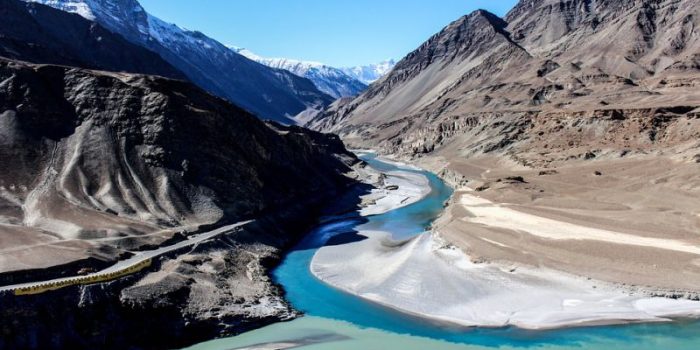The Indus Valley Civilization, also known as the Harappan Civilization, was a major ancient civilization that flourished in the Indus Valley region, covering modern-day Pakistan, India, and parts of Afghanistan. With a duration of over 1600 years, this civilization was one of the largest of the four great ancient civilizations.
Although the precise origins of this civilization are still unknown, its ruins were first discovered in Harappa, which is why it’s sometimes referred to as the Harappan Civilization. The Indus Valley Civilization is renowned for its advanced engineering, well-planned cities, and elaborate drainage system that was ahead of its time.
The civilization’s decline remains a mystery, but there are several interesting facts that make this civilization unique.
The cities of the Indus Valley Civilization were meticulously planned, with streets laid out in a grid pattern. These cities boasted large public buildings, granaries, and workshops, which are evidence of a sophisticated urban planning system.
The civilization was renowned for its advanced engineering, including the complex and elaborate drainage system that utilized terracotta pipes to channel waste and wastewater out of the cities. The Indus Valley Civilization is also famous for its distinctive pottery, seal-making, and jewelry.
The society of the Indus Valley Civilization was highly organized, with clear evidence of social stratification. The civilization’s economy was based on agriculture, with a diverse range of crops grown in the region, including cotton, wheat, and barley.
In modern times, the discovery of the Indus Valley Civilization has provided fascinating insights into the ancient world. The civilization’s legacy lives on through its impressive architecture, art, and engineering feats.
1. The Indus Valley Civilization: A Glance into the Largest of the Ancient Civilizations
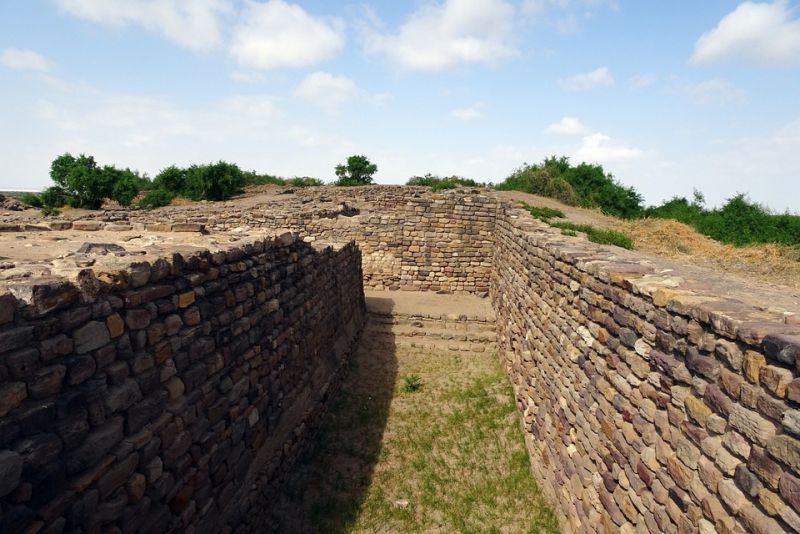
The Indus Valley Civilization (IVC) is the largest of the four ancient civilizations that include Egypt, Mesopotamia, India, and China. Excavations of the IVC sites are still underway, and by 1999, researchers had discovered 1,056 cities and settlements. The civilization spanned over a vast area of modern-day Pakistan, a significant portion of India, and parts of Afghanistan.
It is interesting to note that the era in which the IVC existed is yet to be determined. However, a study published in the Nature journal in May 2016 suggests that the Harappan Civilization, which is a part of the IVC, is about 8,000 years old. This is 2,500 years older than previously believed, which means that the IVC predates the ancient civilizations of Egypt and Mesopotamia.
The IVC was characterized by its well-planned cities and advanced drainage and water supply systems. Its people were skilled in handicrafts, trade, and agriculture. Archaeological findings have also suggested that the IVC was a prosperous civilization with a complex social structure, evidenced by the remains of public buildings, granaries, and houses.
Today, the remains of the IVC stand as a testament to the incredible technological and social advancements achieved by this ancient civilization. By shedding light on the IVC, researchers and historians can better understand the origins of human society and the evolution of civilization.
Read More: 10 Best Travel Destinations for Art Lovers
2. Pioneers in Advanced Sanitation Systems
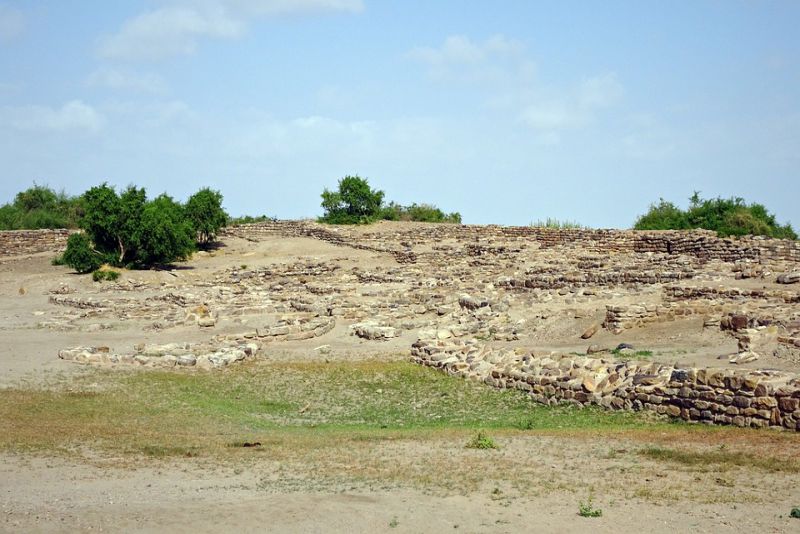
The Indus Valley Civilization (IVC) was not only one of the largest ancient civilizations but was also a pioneer in the field of advanced sanitation systems. Additionally, some houses even had the earliest known flush toilets in the world.
These points highlight the IVC’s exceptional skills in hydraulic engineering and the importance they placed on hygiene. It is fascinating to note that the IVC’s advanced sanitation system was more than just a technological marvel; it had a direct impact on the civilization’s health and productivity.
Today, the IVC’s sanitation system stands as a testament to the ingenuity of this ancient civilization. It has also played a crucial role in shaping modern sanitation systems and continues to inspire researchers and engineers to develop new and innovative ways to maintain public health.
3. Discovering the Innovations of the Indus Valley Civilization in Metallurgy and Handicrafts
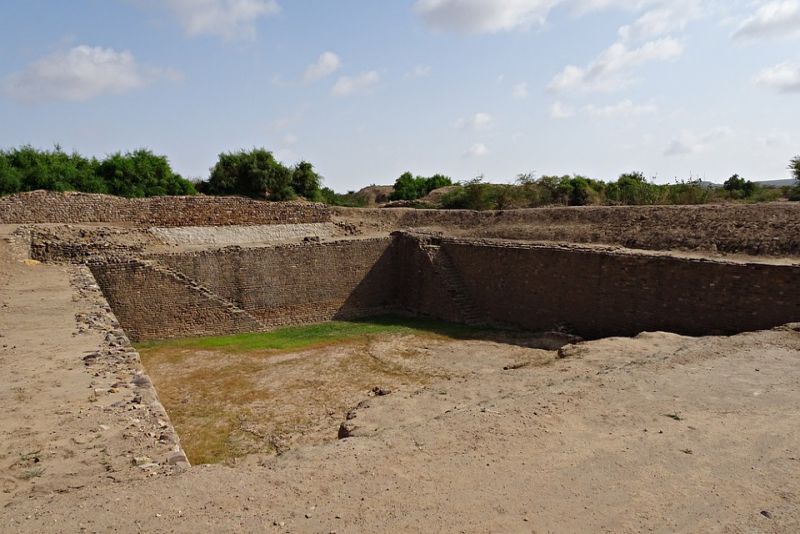
One of the most striking features of this ancient civilization was its technological innovations, particularly in the fields of metallurgy and handicrafts. Metallurgy was a significant achievement of the IVC people. They produced copper, bronze, lead, and tin, and used these materials to create a variety of objects such as tools, weapons, and ornaments.
The famous Dancing Girl of Mohenjo-Daro, a bronze statuette depicting a girl in a standing position, is one of the most well-known examples of their metallurgical expertise. The intricate details of her ornaments and bangles on her left arm, a custom still prevalent in some parts of India, are an exquisite example of their craftsmanship.
The IVC also developed new techniques in handicrafts, including the art of seal carving. Their most notable seal is the Pashupati seal, which portrays a seated figure surrounded by animals. The depiction is believed by some experts to be of the Hindu god Shiva, in his incarnation called Pashupati or “lord of the animals”. However, the actual identity of the figure remains a topic of debate.
The Indus Valley Civilization was a pioneer in the field of metallurgy and handicrafts, and their innovations continue to inspire us even today. Through their mastery of materials and creative imagination, they produced objects that were not only beautiful but also served practical purposes. Their legacy still influences the world of art and craft today.
4. Revealing the Fascinating Dental Practices of the Indus Valley Civilization
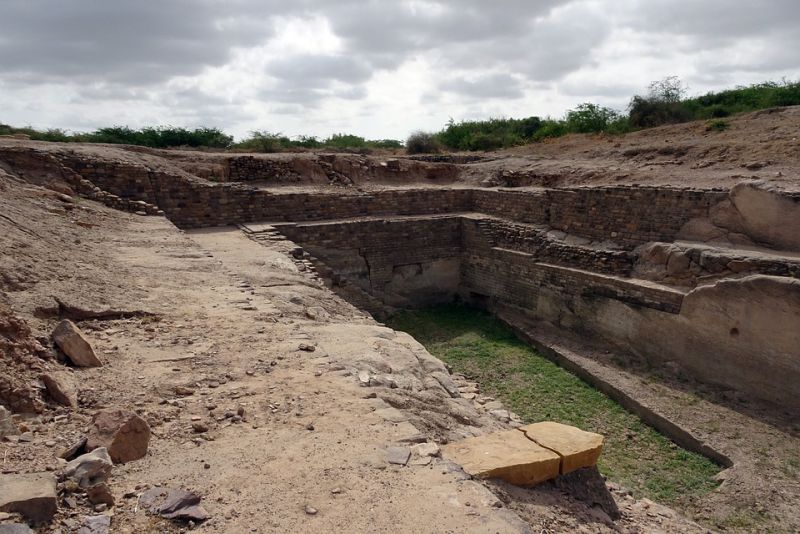
The Indus Valley Civilization (IVC) is renowned for its remarkable technological advancements, and it is not surprising that the ancient civilization knew about dentistry. Recent discoveries show that they were pioneers in this field.
Buttons made from seashells were one of the earliest forms of ornaments used in clothing by the Indus Valley people. Interestingly, these buttons had holes carved in them to attach them to clothing using thread. This demonstrates their ability to produce intricate designs and manipulate materials to suit their needs.
Another architectural feature attributed to the IVC is the step-well, which was used to access the water by descending a set of steps. This feature was later adopted in the architecture of the Buddhists and Jains of India.
In 2001, archaeologists made an exciting discovery that the Indus Valley people knew proto-dentistry. This highlights their remarkable medical knowledge and suggests that they had a deep understanding of the human body. The excavation of 11 drilled molars from nine adults was found at this site, revealing their exceptional dental practices.
The Indus Valley Civilization had an exceptional understanding of materials, as evidenced by their intricate button-making, step-wells, and knowledge of proto-dentistry. These discoveries demonstrate that the Indus Valley people were well ahead of their time in their understanding of technology, medicine, and engineering. Their legacy continues to inspire us even today, providing a glimpse into the remarkable achievements of this ancient civilization.
5. What Led to the Mysterious Collapse of The Indus Valley Civilization?
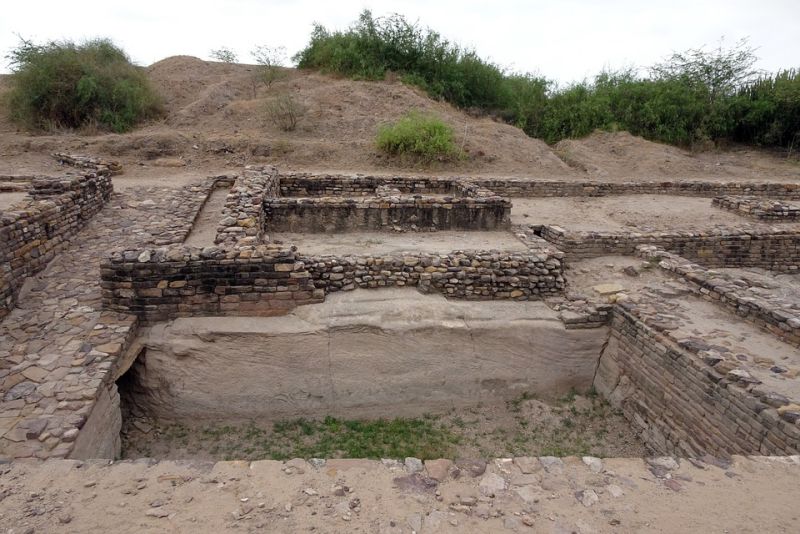
The Indus Valley Civilization (IVC) flourished in South Asia from 2600 to 1900 BC, before mysteriously collapsing in the 2nd century BC. The reasons for the collapse of this ancient civilization are still not fully understood, but several theories have been proposed.
The Aryan Invasion theory, proposed in 1953, suggested that the IVC was invaded and destroyed by an Indo-European tribe. However, recent evidence has discredited this theory. British archaeologist Mortimer Wheeler, who proposed the theory, based it on a group of 37 scarred skeletons.
Experts now suggest that the decline of trade, which was a significant part of the Harappan economy, could have been a factor. The IVC had trade connections with regions such as Persia, Mesopotamia, and possibly Egypt.
The IVC may have also been unable to sustain its population of over five million, which could have led to its collapse. Finally, drought and adverse climatic conditions in the region may have been a major reason for the fall of the Indus Valley Civilization.
Furthermore, the reasons for the collapse of the IVC are still a mystery. Although the Aryan Invasion theory has been discredited, economic instability, overpopulation, and climate change are possible factors that may have led to its downfall
6. Engineering Marvels in Ancient Times
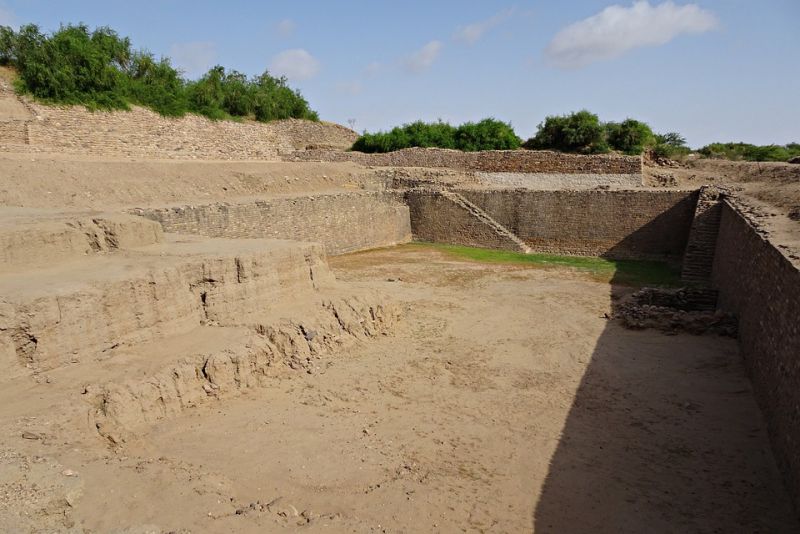
The cities of the Indus Valley Civilization, including Harappa and Mohenjo-Daro, were architectural wonders of their time. With an innovative approach to city planning, these ancient cities showcased a level of engineering mastery that was unparalleled in the world. To protect themselves from seasonal floods and polluted waters, the settlements were constructed on raised platforms, providing much-needed safety and security to their inhabitants.
One of the most fascinating features of these cities was the grid-like network of streets, which were laid out in straight lines intersecting at right angles, giving the impression of a well-organized metropolis. Another impressive feature was the uniformity of the bricks used in construction, which further highlights the meticulous planning and precision of the builders. These bricks were used to construct buildings that formed a barrier against the noise and dust of the street, creating a peaceful environment within the homes.
The houses in these cities were designed with an interconnected outer wall, providing an added layer of protection from the elements and ensuring privacy for its residents. Narrow passages through the outer wall led to a shared courtyard, which can be considered a neighborhood compound where several houses could share communal space.
Moreover, the cities of the Indus Valley Civilization were a testament to the exceptional engineering skills and remarkable attention to detail of its inhabitants. The systematic planning and innovative construction techniques of these cities continue to amaze and inspire even today.
7. The Great Bath: A Fascinating Piece of Architecture from The Indus Valley Civilization
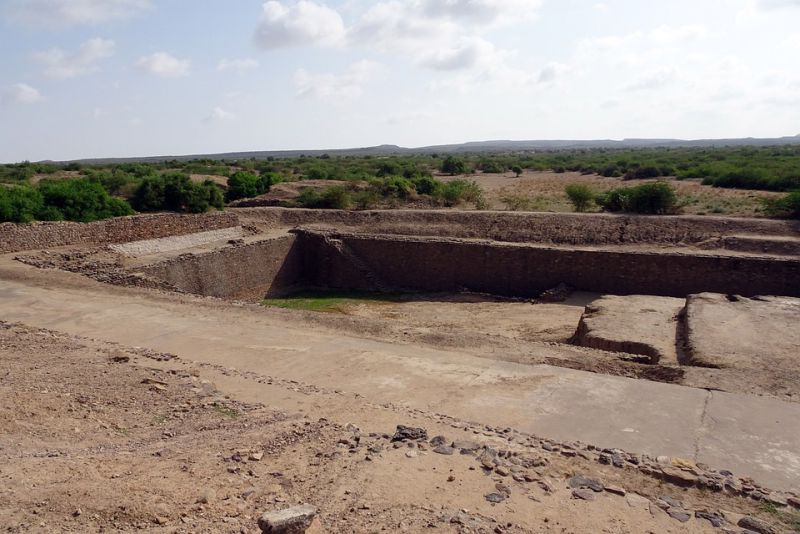
The Indus Valley Civilization was renowned for its architectural marvels, including dockyards, granaries, warehouses, brick platforms, and massive protective walls. However, one of the most famous structures of the Harappan Civilization was the Great Bath located in Mohenjo-Daro, Sindh, Pakistan. It is considered to be the earliest public water tank in history, and its design and construction showcase the advanced engineering skills of the Indus Valley people.
The Great Bath is a large tank with dimensions of 11.88 meters x 7.01 meters and a maximum depth of 2.43 meters. It features two wide staircases that serve as entry points to the structure. The tank is constructed with finely fitted bricks on the edge, gypsum plaster, and a thick layer of bitumen (waterproof tar) making it watertight. The precision and meticulousness of the construction highlight the architectural mastery of the Indus Valley people.
Most scholars believe that the Great Bath was used for ritualistic purification, where the impurities of the bathers were purged before participating in religious ceremonies. The Great Bath’s design and purpose provide insight into the Harappan civilization’s belief systems and their practices related to hygiene and cleanliness.
Moreover, the Great Bath is a fascinating piece of architecture that reflects the advanced engineering skills of the Indus Valley Civilization. Its design, construction, and purpose offer a glimpse into the culture and religious practices of the people who lived over 4,000 years ago. The Great Bath’s significance in the Indus Valley Civilization cannot be overstated, and it remains a testament to the remarkable technological advancement of its time.
8. Unlocking the Ingenuity of the Indus Valley Civilization’s Weights and Measures System
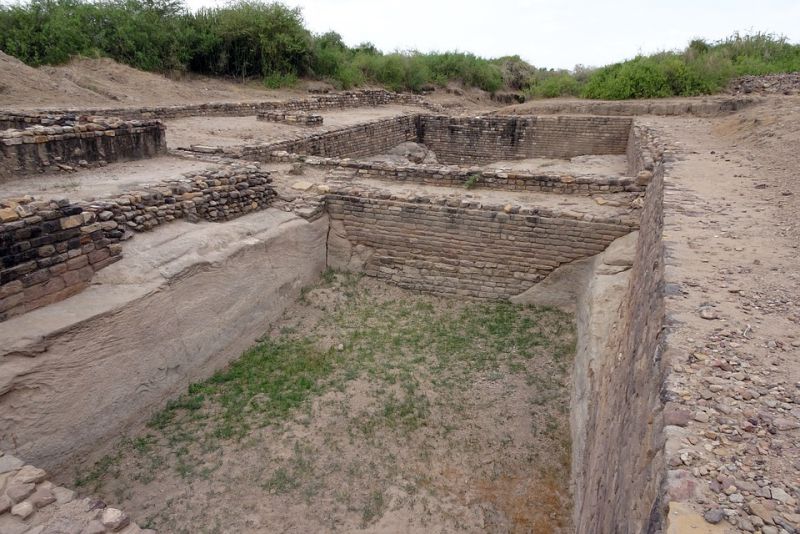
The Indus Valley Civilization (IVC) was a marvel of engineering, with its impressive cities and advanced sanitation systems. However, one of its most remarkable achievements was its ingenious weights and measures system. The IVC was among the first civilizations in the world to develop a standardized measuring system.
The IVC’s measuring system was remarkably precise. The oldest known measuring rod was a copper-alloy bar discovered at an IVC site. This rod was divided into units of 1.32 inches (33.5 mm), with decimal subdivisions marked with incredible accuracy, to within 0.005 of an inch. Interestingly, the bricks found throughout the IVC civilization were of dimensions that corresponded to these units, indicating that a standard measuring system was in widespread use.
The weights found in the IVC sites followed a binary decimal system, with units of 1, 2, 4, 8, and 16, up to 12,800 units, with each unit weighing about 0.85 grams. Some of these weights were so tiny that they were likely used by jewelers to measure precious metals.
The IVC’s standardized measuring system had implications for trade, commerce, and taxation. It also highlights the sophistication of their society and their expertise in metallurgy. Furthermore, the precision of the system showcases the remarkable knowledge and skill of the IVC people in the field of weights and measures.
The legacy of the Indus Valley Civilization lives on to inspire and amaze people even today, with its remarkable technological advancements in various fields. The IVC’s standardized measuring system is a testament to its brilliance and innovation.
9. Discovering the Harmonious society of the Indus Valley Civilization
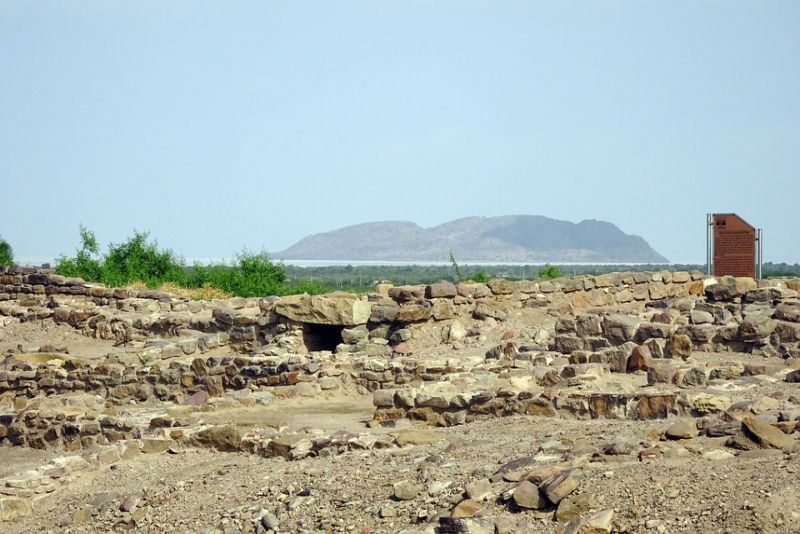
The Indus Valley Civilization is one of the oldest and most advanced civilizations in the world, renowned for its impressive city planning and sophisticated system of government. One of the most notable differences between the Indus Valley Civilization and other ancient civilizations is the absence of any evidence of a military presence. This lack of weapons suggests that the people of the Indus Valley were peaceful and lived in a harmonious society.
Equal Access to Amenities: A Mark of Egalitarianism in the Indus Valley Civilization
One of the most remarkable features of the Indus Valley Civilization was its apparent egalitarianism. All homes within the settlements had access to basic amenities such as water and drainage systems, giving the impression of a society where wealth was evenly distributed. The highly planned cities and settlements of the Indus Valley Civilization suggest the existence of a central authority, but the exact distribution of power remains unknown.
Nature Worship in the Indus Valley Civilization
Trees such as the Neem and Banyan were worshipped as symbols of life and fertility, while animals like Bulls and Elephants were seen as symbols of potency and divinity. The worship of stones, in the form of Lingam and Yoni, was also common and represented the power of creation. These beliefs and practices show the profound reverence that the people of the Indus Valley Civilization had for the natural world and its cycles of birth, growth, and renewal.
10. Discovering The Indus Valley Civilization: From British Army Deserter to Archaeological Excavations
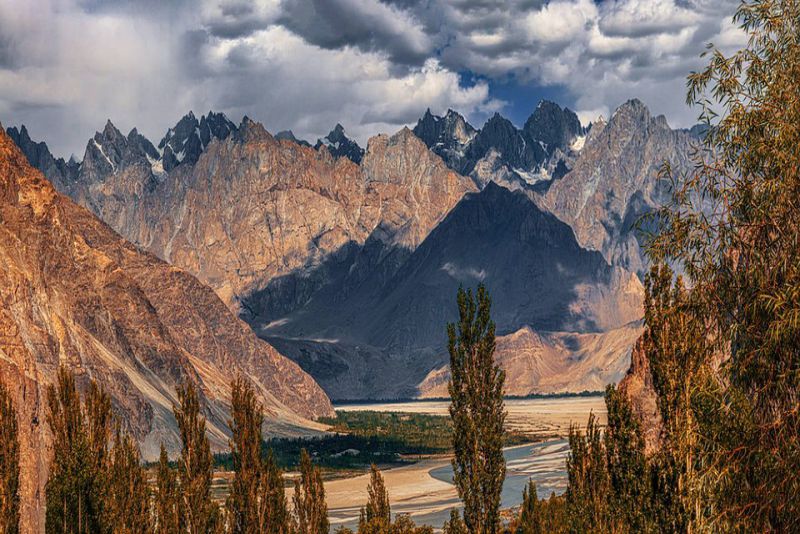
The Indus Valley Civilization (IVC) is one of the world’s oldest civilizations and was first discovered in the mid-19th century. Lewis documented his findings in a book, making the first recorded note of the discovery of IVC.
However, it wasn’t until almost 80 years later, in 1920, that proper excavations began at the site of Harappa by John Marshall, the then-director of the Archaeological Survey of India (ASI).
Unfortunately, the upper layer of the site had already been destroyed by brick robbing for building purposes by the British, who used the hard, well-burnt bricks primarily for constructing a railway bed. Marshall named the civilization after its first find-spot, the town of Harappa, which is why the IVC is also known as the Harappan Civilization.
The civilization flourished from around 2600 BCE to 1900 BCE, spanning parts of what is now Pakistan, India, and Afghanistan. The civilization’s remarkable achievements in urban planning, writing, and trade have made it an important topic of study for archaeologists, historians, and enthusiasts of ancient civilizations.
